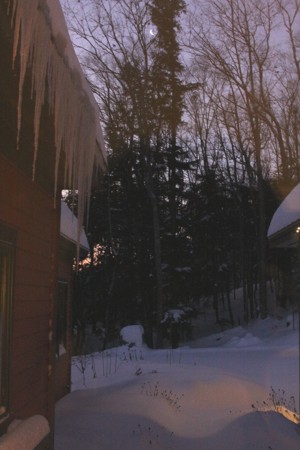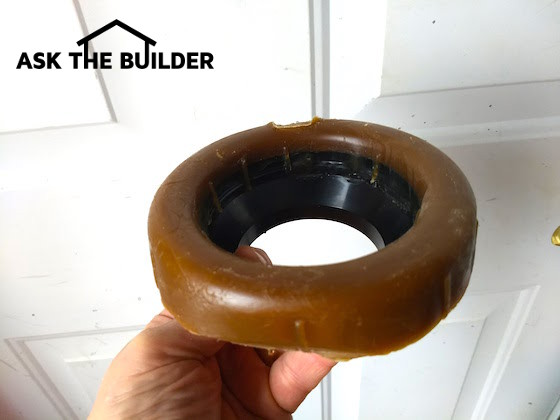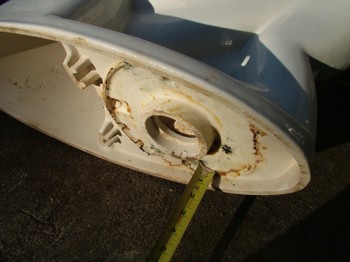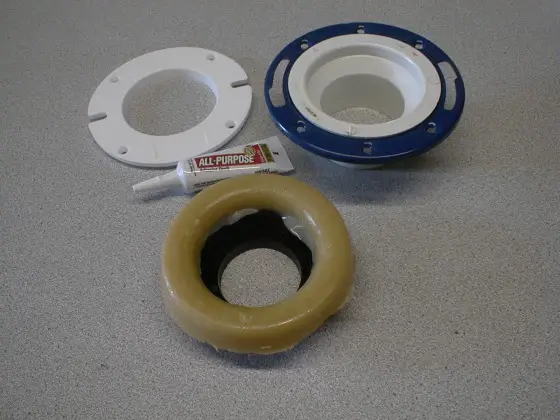What's in This Issue
HAPPY NEW YEAR
ICE CLEATS
TONS OF NEW COLUMNS
SUPER INSULATION
PAINTING CABINETS
ORLANDO VISIT
CINCINNATI ENQUIRER
BRICK WEEP HOLES
SPIRIT OF CHANGE
RECENT COLUMNS
HAPPY NEW YEAR!
Happy New Year to you! I'm all set for a fantastic 2009, no matter what all the news says. I'm still cautious and watching my spending, but in October, I discovered that the Chinese word for crisis is made up of two other of their words: danger and opportunity.
I'm going to try to do my best to show you opportunity throughout the year with respect to how you can save money and time with projects at your home. You can help me by telling me the help you need.
ICE CLEATS
Since moving to New Hampshire, I've discovered that ice cleats are a must. These things slip onto regular boots and allow you to walk on ice as if it were dry pavement. I've tried YakTrax, but am not too satisfied. They break easily on slopes. My driveway is steep, so I need a pair of ice cleats that don't slip off your boots and don't break. What brand have you had the best luck with? My driveway creates lots of stress on the cleat as you walk up and sideways. What about the heavy-duty Stabilicers I see online? They seem to get great reviews.
Read my January 8, 2009 Newsletter for an update on the ice cleats.
TONS OF NEW COLUMNS AND SOON NEW VIDEOS
Stay with me through the entire newsletter. There are tons of new columns at the end. Now that the Christmas season is behind us, new AsktheBuilder.com videos are on the horizon. The end of January and beginning of February look to be busy times taping videos.
SUPER INSULATION
Months ago, I had a quick mention in a newsletter about using the heat-tile technology that's on the Space Shuttles to help us reduce our heating and cooling costs. It appears those crafty Germans have once again got a head start. Can you imagine a house with no furnace? Just before Christmas, I received an email from Kimberley, who lives in Florida. In it was a link to a story she saw in the New York Times. Kimberley was a little miffed, and here is part of what she had to say:
"....With increasing fuel and food prices - hopefully more people will be open to new ideas and demand things that make sense and help save money and the environment. I live in Florida and am amazed and appalled that the Sunshine State isn't leading the nation in solar-energy technology. When I was a very young girl in the seventies, my aunt in Miami had a solar water heater installed at her home, and I remember the scalding hot water flowing from the tap at her house. It worked, and her electric bill was low. Well, I think the nation is wising up now to what's available."
Kimberly, I agree 150%. We need to put all sorts of pressure on our elected officials to create long-lasting incentives that will allow technology to come to the market that will allow us to save money and the planet's resources and make us energy independent.
To view the article in the New York Times, you may have to create a free account. It's worth it. Wait until you read how these houses in Germany have NO furnaces or air conditioning.
PAINTING CABINETS
Carolyn Bohler of Hardin, Texas emailed me:
"I need to know if our old mobile-home laminate cabinets can take paint like you showed in the video. They are hideous, and I want to change them. The cabinets are medium to dark brown, shiny and probably particle-board material. I thought of using compound on the front and adding a raised stencil and some shading and painting. HELP ME."
Carolyn, the simple answer is Yes. If you're like many right now, there is no way you can afford to get new kitchen or bath cabinets. Paint can make them look marvelous. We just redid our kitchen two years ago, and our island cabinet is painted an ivory color with coffee-colored highlights. I didn't think it would look good, but I should have trusted Kathy. It's actually my favorite cabinet in our kitchen.
The house I'm at in New Hampshire has painted kitchen cabinets. They look great even though they are a solid color. Just be sure you follow all the advice in my Painting Kitchen Cabinets video!
Be aware that at my new website, that's soon to be launched, there will be all sorts of interesting solutions to everyday problems like this. What's more, I intend to do some neat videos that will only be on the new website. Be sure you open all newsletters in the future. Why? There's going to be a very special offer in an upcoming issue for you.
ORLANDO VISIT
I'm going to be in Orlando, FL on the evenings of January 14 and 15, 2009. Sears has invited me down there to attend a conference about all the great new lawn and garden tools that will be ready for you in a few months.
At this point, I'm open to grab a bite to eat or have a soda with you. I'll know more where I'll be in a few days. You'll need to come to me as I'll not have any wheels. Surely there will be a nicer restaurant near my hotel we can meet and greet. Or if the weather is great, we can relax out on the patio that surely must exist where I'm staying. We shall see! If you live in Orlando and want to get together, email me ASAP.
Larry and Bill joined Tim in Orlando.
CINCINNATI ENQUIRER
A week ago, The Cincinnati Enquirer had a special announcement. Being a syndicated columnist, the note from the publisher got my attention. It talked about changes that would start the next day. Well, after I saw the changes, I had to write about it. If you subscribe to a daily newspaper, I urge you to read my blog post. It has some interesting things in it about my early connections with the Enquirer as well as the Cincinnati Post and Times Star! In fact, I'm going to tape a video later today about the paper platters I talk about in the blog post. I'll have that video link for you in a few days.
BRICK WEEP HOLES
I owe some of my success to a few companies that were sponsors of mine way back in the Dark Ages of the Internet. I'm talking about 1995-97. AsktheBuilder.com launched in November of 1995, and Pella was my first sponsor. But I quickly added other companies, most of them smaller businesses that didn't have huge marketing departments. I discovered it was far easier to communicate with the president of a medium or small-sized company than the marketing manager for a Goliath in the industry. The sponsors I had back then got me through the transition phase from active builder to writer/publisher.
One of these companies was R.H. Tamlyn and Sons. I got to know Tom Tamlyn, the president, quite well about ten years ago. Several days ago, UPS delivered a box to me from Tamlyn. In the box were all sorts of samples of his products, a new catalog and business cards of key people on the Tamlyn team. Tom's card was in there as well.
One of the practical items he's selling now at his online store - he didn't sell online in 1997 - is a retrofit rodent and bug guard for brick homes that have the vertical weep slots. A weep slot is a missing vertical head mortar joint you might see in the first row of brick on top of the foundation. These slots are there to allow water to escape to the exterior of your home. They should always be open. Sometimes bees, bugs and other things see these as great entrances to the massive void space behind brick veneer. These rascals can then block the weep slots with all sorts of debris, so it's a good idea to block them. The guard stops things from getting in, but allows water to drain out.
I decided to link to this item in Tom's store to help return the favor of his support of me all those years ago. I feel he runs a great company that really tries to sell fantastic products. Tamlyn primarily sells to builders and remodelers, but you may discover something at his store you can use.
SPIRIT OF CHANGE
In the spirit of change for 2009, I did something I haven't done in over 30 years. My youngest daughter requested it. Moments ago, I shaved off my mustache. Kathy thinks I look odd. Kelly says I look younger. All I can say is my upper lip is cold at this point. Watch for a new video soon where you can see me sans mustache.
RECENT COLUMNS
Wainscoting used to be tough to install in a home. Not anymore. You can get kits made for your home.
When it gets really cold, is your furnace or boiler able to keep you warm? Do you want to know why it's struggling?
Do you have ice forming on the plumbing-vent pipes on your roof?
Have you seen frost form on walls? Not outside your home, I'm talking about the INSIDE walls of your house!
When you see cracks that form on your outside walls, is your foundation on bad soil? Discover one way to tell.
Click here to read past copies of my newsletters.





